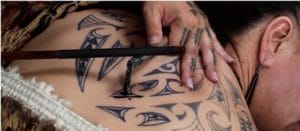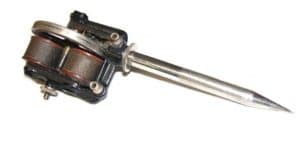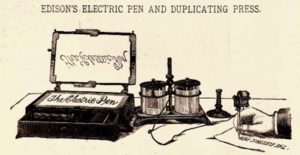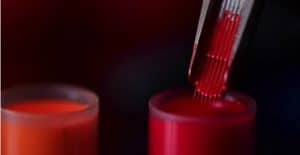By: Ileana Vizcarrondo
The oldest documentation of tattoos dates back to around 3300 B.C. There were many different ways people would tattoo. The Maoris of New Zealand would take a piece of bone from a shark tooth or stone, carve it to a point and strike it with a mallet to open the skin before applyingpigment to the wounds. Of course, this was and still is, done primarily for ritual purposes. Nevertheless, it truly puts into perspective just how many advancements have been made in how we are able to apply ink to skin. It wasn’t until December of 1981that the first tattoo machine would be patented by Samuel O’Reilly, a New York tattoo artist.

The development of the modern tattoo machine technically began in 1875 when Thomas Edison invented the electric pen. This pen is the first electric motor driven appliance to be produced and sold in the United States. It operates using rotary technology, much like we see in tattoo machines today.
Rotary machines work on a spinning motor that moves the needle up and down. These machines are known to be more quiet and less harsh on the skin than a coil machine which can help the tattoo heal quicker. More and more artists are switching from traditional loud coil machines to rotary machines.

The electric pen was essentially a smaller and messier version of a printer. It is configured by a stylus, cast iron holder, a wet cell battery which was wired to an electric motor mounted at the top of the stylus. The motor was able to rapidly move the stylus back and forth creating punctures into paper at 50 punctures per second. Once the person finishes writing and creates the stencil, ink will be poured over it on a flatbed and pressed with an ink roller to create the copy. The pen, flatbed and ink roller were sold as a set; the most expensive one was $60.

This invention was quickly forgot about and replaced when the typewriter started becoming more accessible to people. In the late 1880’s, Samuel O’Reilly had already been experimenting and modifying different machines to see which would work best for tattooing. His original pre-patent design used a dental plugger but he eventually came across the electric pen fifteen years after its initial invention and made history.

The modifications he made to the electric pen was the inclusion of an ink reservoir at the tip of the barrel and a change from the straight barrel to one with a couple of right-angle bends that moved the motor smoother. He also made it so the needle tube could hold a total of 3 needles. This advancement impacted the tattoo industry heavily and with the Industrial Revolution on the rise, technology advances were at an all-time high as well. Everyone wanted to come up with a way for faster, more efficient tattooing. Not even a month after O’Reilly’s patent, a man named Tom Riley from London patented the first single coil machine which used a modified door bell.
The first tattoo artist to appear on television, George Burchett used Riley’s original coil machine but ended up upgrading the design by including a stop switch and a plug that you can put in the wall instead of relying on batteries.
Eight years later, the first twin coil machine was invented by Alfred Charles South, also from London. He too was inspired by the doorbell so his design included two coils enclosed in a plate steel box. A spring was often attached to take some of the weight off the tattoo artist’s hand.
The twin coil machine is also thought to be inspired by another Edison invention, the telegraph, since it too uses side by side coils to operate. Due to the increasing popularity of this machine, the tattoo kit was officially created which included the machine, ink, needles and a book of designs.
It has been almost 150 years since Edison invented the electric pen, the invention that would, little to his knowledge, change the tattoo industry forever. Today, you can find everything from wireless tattoo machines to tubes that can hold 100+ needles! It is clear that the evolution of ink is still very much in motion and tattooing is more popular now than ever.